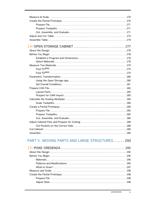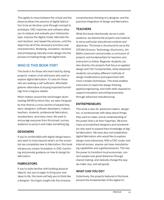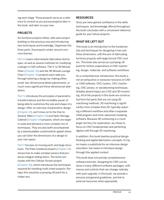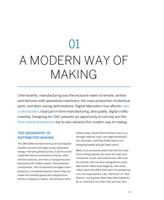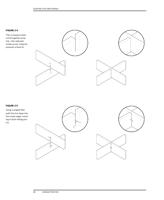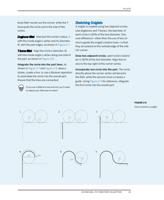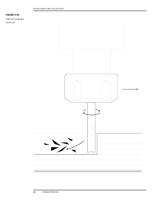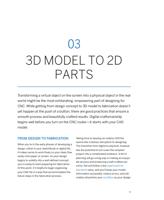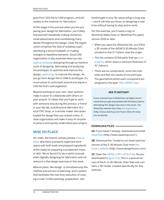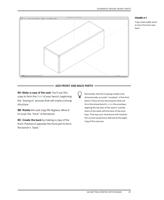
ing each stage. These projects serve as a refer-
ence to consult as you pursue projects later in
the book, and later on your own.
PROJECTS
Six furniture projects follow, with each project
building on the previous one and introducing
new techniques and knowledge. Organized into
three parts, the projects center around com-
mon themes.
Part III covers intermediate fabrication techni-
ques, as well as several methods for modifying
a design in CAD software. The 5- to 30-Minute
Chair (Chapter 10) and the 90-Minute Lounge
Chair (Chapter 11) projects each walk you
through tailoring a design by making either
small, two-dimensional detail adjustments, or
much more significant three-dimensional alter-
ations.
Part IV introduces the principles of parametric
transformations and the incredible power of
being able to customize the size and shape of a
design. After an overview of parametric design
(Chapter 12), we’ll move on to the One-to-
Several Table (Chapter 13) and Open Storage
Cabinet (Chapter 14) projects, which are larger
in scale and demand a more complex mix of
techniques. They are also both accompanied
by a downloadable customization applet where
you can tailor the dimensions of a design to
your own specs.
Part V focuses on moving parts and large struc-
tures. The Poke Credenza project (Chapter 15)
shows how to make complex joinery that pro-
duces integral sliding doors. The book con-
cludes with the Cellular Screen project
(Chapter 16), which introduces the techniques
required for handling multi-sheet projects. Per-
haps this would be a jumping-off point for a
maker-pro.
RESOURCES
Once you have gained confidence in the skills,
techniques, and knowledge offered throughout,
the book concludes with a convenient reference
guide for your future projects.
WHAT WE LEFT OUT
This book is an introduction to the fundamen-
tals and techniques for designing in two and
three dimensions, with the aim of fabricating
furniture projects with large format CNC rout-
ers. This book also serves as a jumping-off
point for further explorations in CNC machin-
ing, design, materials, and software workflows.
As a comprehensive introduction, this book is
not an exhaustive or exclusive resource on CAD
or CAM software, CNC routers, CNC machin-
ing, CNC joinery, or woodworking techniques.
Notably absent topics are 2.5D and 3D machin-
ing. All of the projects in this book are construc-
ted from flat parts that are cut using 2D
machining methods. 3D machining is signifi-
cantly more complex than 2D, typically requir-
ing a different workflow and often a separate
CAM program and more advanced modeling
software. Because 3D contouring is a much
larger territory for exploration, we chose to
focus on CNC fundamentals and perfecting
digital craft through 2D machining.
In addition, this book teaches practical design
thinking and digital fabrication concepts. It’s by
no means a substitute for an intensive design
education, but seeks to introduce design
through this applied context.
This book does not provide comprehensive
software tutorials. Designing for CNC can be
done in many different software packages, with
menus and controls that can change radically
with each upgrade. In this book, we provide a
process and general guidelines, and link to
external resources when appropiate.
PREFACE
xxi













